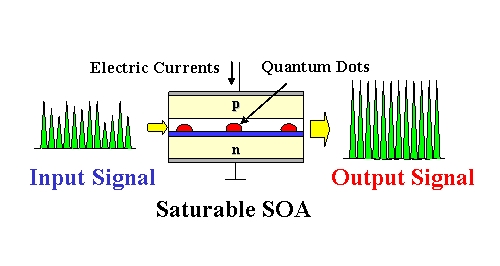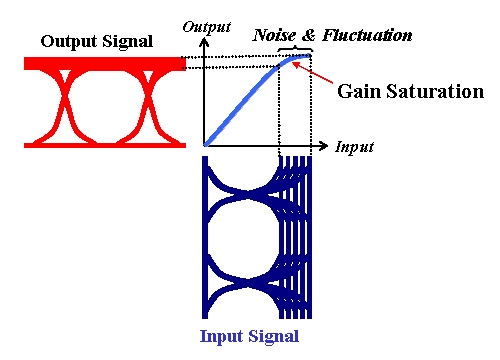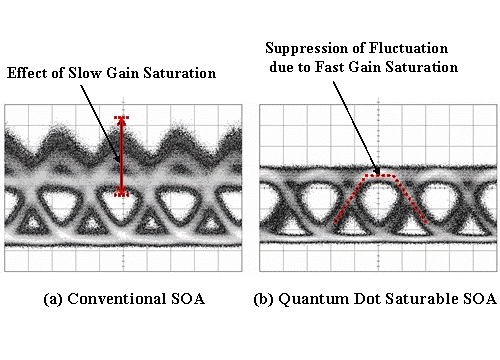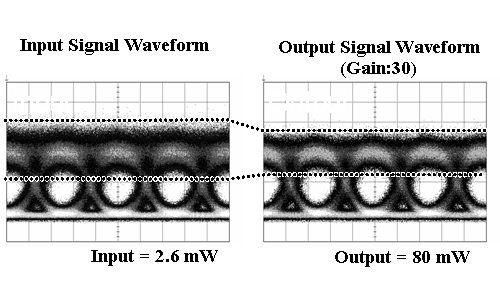Archived content
NOTE: this is an archived page and the content is likely to be out of date.
Fujitsu Develops World's First Semiconductor Optical Amplifier with Signal Waveform Re-shaping Function at 40Gbps
Uses quantum dots to eliminate waveform degradation and significantly reduce noise
Fujitsu Limited,Fujitsu Laboratories Ltd.
-
[1] semiconductor optical amplifier (SOA)
A semiconductor device that amplifies an optical signal through the stimulated emission of stored carriers in a semiconductor. The carriers are usually supplied by electrical current.
-
[2] quantum dots
Nano-scale semiconductors consisting of semiconductor crystals that are several dozen nanometers in size, in which electrons can be stored.
-
[3] all-optical 3R regeneration
Optical 3R regeneration is technology whereby a degraded signal is restored to its original quality, and consists of Re-amplification, Re-timing, and Re-shaping (3R). When these processes do not involve conversion to electronic signals, they are referred to as all-optical 3R regeneration.
-
[4] improvements in crystal growth technology of quantum dots
Fujitsu utilized and modified technology based on research results from "InAs Quantum Dot Growth Technology on InP Substrates", which was conducted as part of the Photonic Network Project of the Optoelectric Industry and Technology Development Association (OITDA), commissioned by the New Energy and Industrial Technology Development Organization (NEDO) of Japan.
About Fujitsu
Fujitsu is a leading provider of customer-focused IT and communications solutions for the global marketplace. Pace-setting technologies, highly reliable computing and communications platforms, and a worldwide corps of systems and services experts uniquely position Fujitsu to deliver comprehensive solutions that open up infinite possibilities for its customers' success. Headquartered in Tokyo, Fujitsu Limited (TSE: 6702) reported consolidated revenues of 4.7 trillion yen (US$45 billion) for the fiscal year ended March 31, 2004.
For more information, please see: http://www.fujitsu.com/
About Fujitsu Laboratories
Founded in 1968 as a wholly owned subsidiary of Fujitsu Limited, Fujitsu Laboratories Limited is one of the premier research centers in the world. With a global network of laboratories in Japan, China, the United States and Europe, the organization conducts a wide range of basic and applied research in the areas of Multimedia, Personal Systems, Network, Peripherals, Advanced Materials and Electronic Devices. For more information, please see: http://jp.fujitsu.com/labs/en/
Technical Contacts
Photonics and Electronics LaboratoriesOptical Semiconductor Devices Lab.
![]() Phone: +81-46-250-8250
Phone: +81-46-250-8250
![]() E-mail: optisemi@ml.labs.fujitsu.com
E-mail: optisemi@ml.labs.fujitsu.com
Company:Fujitsu Laboratories Ltd.
All company and product names mentioned herein are trademarks or registered trademarks of their respective companies.
Date: 04 March, 2005
City: Tokyo
Company:
Fujitsu Limited,
Fujitsu Laboratories Ltd.,
,
,
,



